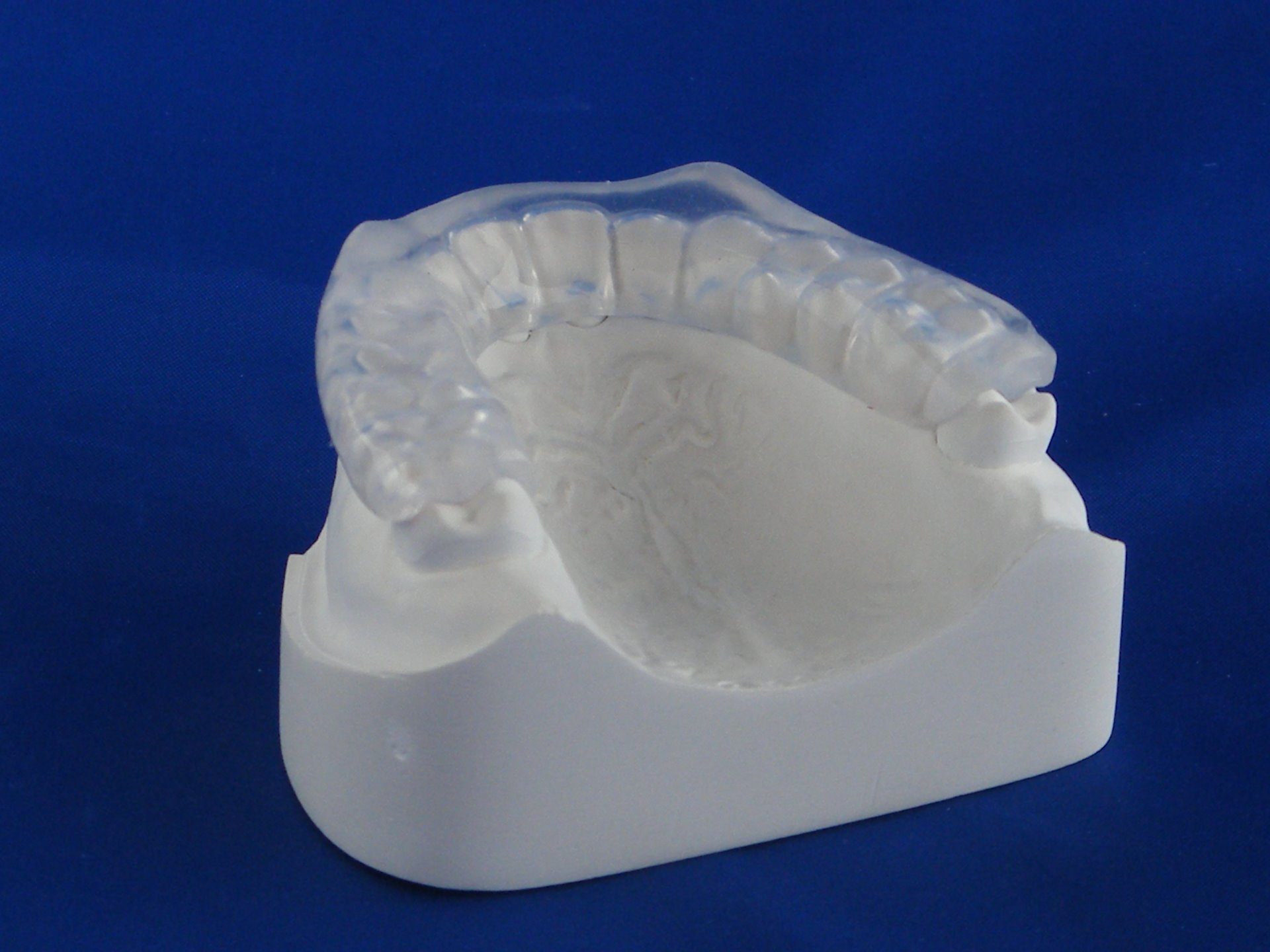Biteguard or Occlusal splint?
Posted on 4th November 2019 at 09:38
TMJ dysfunctions can be exacerbated by bruxism so when might it be better to fit a deprogrammer or a stabilisation splint?
When your clients present to you with symptoms such as: headaches & jaw aches, or if you see tooth erosion you may recommend the use of a bite guard. Soft biteguards are great for mild bruxism (teeth grinding/clenching), whilst hard/soft or hard biteguards last longer with heavier bruxism.
However, have you checked for a TMJ dysfunction? Could it be better to fit a deprogrammer? TMJ dysfunctions can be exacerbated by bruxism, so it is worth taking the time to check for mal occlusion as the patient may benefit from a deprogrammer in this case.
If a patient presents to you with a clicking jaw this is a clear sign of mal occlusion, but you can also test for mal occlusion by: examining the jaw’s range of motion, palpating the muscles of mastication, the neck and shoulders, manipulation of the TMJ, and a visual examination of the mouth. Symptoms the patient may mention could include jaw pain, neck pain, headaches, dental pain, and tooth sensitivity.
If there is a mal occlusion the Michigan/Tanner bite splints (stabilisation splints) will reposition the jaw within a few weeks or months. The purpose of the splint is to change the way the teeth bite together and it reduces the pressure on the jaw joints or TMJ meaning the muscles can relax which is why many of the presenting symptoms will disappear.
To achieve this muscle relaxation and mandibular repositioning the occlusal surface of the splint is flat and without indentations so as not to hold or guide the mandible into any predetermined position. However, the area lateral to the canine and anterior to the incisor ICP contacts is gently ramped to provide anterior guidance.


If you haven’t fitted a Michigan or Tanner here is a brief summary of what is involved.
You will need to send us two impressions with a bite wafer which is used to create a balanced occlusion. Some of our dentists choose to send us a Denar facebow as well. However, within the lab we can use an average value articulator to create an almost perfect occlusion.

If the splint is being used to treat mandibular dysfunction, you may need some follow up appointments as the mandible repositions, as it is necessary to adjust the splint to maintain even contact until a stable retruded position is achieved on two successive appointments. At each adjustment the occlusion is re-examined and the splint readjusted to re-establish even contact.
It is worth noting that the main cause of parafunction is largely stress-related so if the underlying causes for stress aren’t removed the patient can be weaned off the splint but may need to wear it again if discomfort returns, which may well be at times of stress.
As always, please feel free to contact me and I can talk through the process of prescribing and fitting a Michigan or Tanner occlusal splint with you if you haven’t done it before, but hopefully you can be reassured that this is a very profitable line of business and brings the patient great relief.
You can contact me via this blog or give us a call on 01937 588868.
Giles Bradley.

Tagged as: Biteguard, Occlusal splint
Share this post: